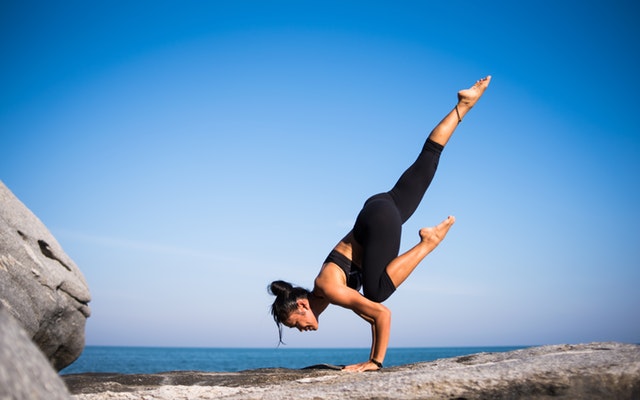This is the third installment of my PRISE® exercise training routine I introduced previously (see, “RISE Up!” and “Before and After”). As a reminder, “PRISE®” is my acronym for Protein (P), Resistance (R), Interval (I), Stretching (S), and Endurance (E) training. Each routine is designed to target a specific health and fitness related component.
Resistance training (R) has been shown to reduce belly fat and increase lean body mass (muscles) and lets you play like a kid again!
Interval sprint training (I) is great for improving cardiovascular (heart) fitness, increasing metabolism (calorie burn), reducing body fat and increasing muscle mass.
Stretching and restorative training (S) is ideal for improving balance, muscle tone and flexibility, lowering blood sugar and enhancing mood.
Endurance (E) training is best for lowering blood pressure and increasing feelings of happiness, it’s a great “stress buster”.
In this blog, I will explain the “S”, or stretching training, component.
I recommend you perform each routine 1 day per week for a total of 4 days of exercise per week. After the first 4 weeks feel free to choose one of the routines to perform a second time but I recommend not exceeding 5 days of exercise per week because your body needs time to recover, replenish, and rebuild. Always perform the dynamic warm-up before and a gentle cool-down after each PRISE session.
**Before engaging in any exercise program, please obtain medical clearance from your primary health care provider. Dr. Paul recommends that all physical exercise be performed properly and safely so you avoid injury and allow yourself to make the most health and physical performance benefits.
During a recent television interview to discuss health and wellness, one of the producers asked me what I thought about stretching and yoga exercises. Interestingly, this is the most common exercise and fitness question I am asked and my reply is always the same… stretching, flexibility and yoga is the “glue” that holds the body together and without it, your body would fall apart and the risk of injury would increase dramatically.
Our muscular and skeletal (bones) systems function like pulleys and levers and therefore they need to be kept well-lubricated and aligned properly. In addition, our tendons and muscles (the cables of the pulley) need to be adequately stretched and cared for to prevent them from becoming stiff and brittle to avoid tearing. Stretching exercises are particularly important the more physically active we are and as we age.
A regular stretching/flexibility routine that moves the joints, tendons, ligaments and muscles through a range of motion is critical to maintaining optimal health and function. This type of exercise routine may take different forms such as simple stretching, yoga, tai chi, pilates, etc. but the important point is it needs to be done consistently on a regular weekly basis.
There are two main types of stretching/flexibility exercises: 1) static and 2) dynamic.
Static stretching involves holding a specific stretch in place for 10 seconds or longer and should be performed while the muscles are warm and there is increased blood flow and circulation, such as after you have exercised. At PRISE® Protocol (www.priseprotocol.com), we recommend clients perform this type of exercise in a warm environment (75-90° F) at least once a week for 45-60 minutes, following a 5 minute warm-up. This type of stretching/flexibility exercise is often associated with certain forms of yoga and is proven to increase joint range of motion, balance, muscular flexibility, blood flow and tone, as well as enhance mood state. Please see sample Stretching routine below.
Dynamic stretching are movements performed prior to engaging in sport or athletics. These are the warm-up exercises that we often see professional athletes perform prior to competing. They are active in nature and involve a continuous movement of the body (limb) through a full range of motion in an attempt to “wake up” or activate the muscles, tendons, ligaments and bones needed to perform the movements for that sport or activity. These types of stretches combine yoga, pilates, and tai chi movements and have been proven and are associated with reduced belly fat, improved heart health and feelings of well-being.
S training is crucial to help prepare your body for physical exercise as well as recover from exercise and is a great stress-buster and mood enhancer!
At the beginning of each Stretching session perform a 5-minute dynamic warm-up (see “The Before and After”, blog on www.priseprotocol.com.
Remember, the Stretching (S) exercises are the “glue” that holds the body together and produce a sense of harmony and balance inside the body. Science also demonstrates that various forms of stretching, such as yoga, tai chi and pilates strengthen our muscles, burn body fat, and improve our mood state.


